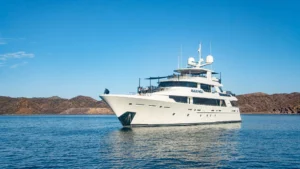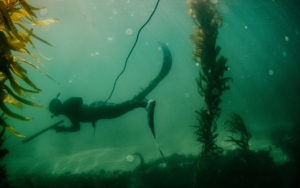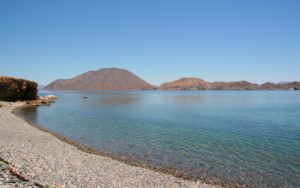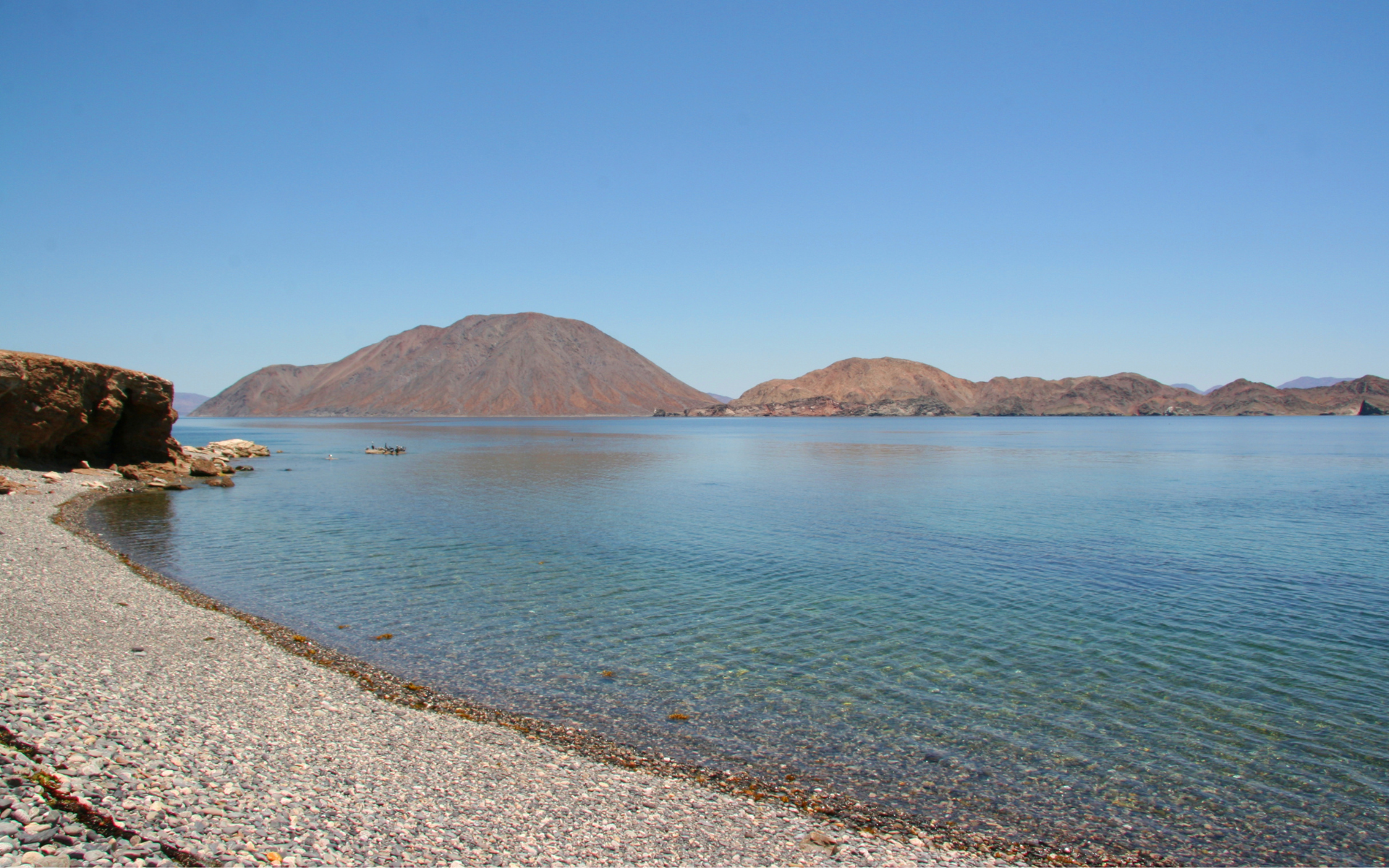Often referred to as the “Aquarium of the World”, the Sea of Cortez has an incredible marine biodiversity. It’s home to a wide variety of marine life, including several fish species, due to its warm and nutrient rich waters. The numerous islands, calm waters, and pleasant climate make it a paradise for your fishing adventure. The region provides an opportunity for both experienced and novice anglers to catch resident species such as the Sierra Mackerel or Yellowtail Amberjack. Along with many other types of seasonal fish you can score during your fishing adventure in the Gulf of California.
Below you’ll learn about the various types of fish you can score while on your Cabo yacht adventure. We’ve put together a thorough list of fish you’ll catch, their approximate locations, and expert tips on how to catch them.
Types of Fish Found in the Sea of Cortez
The Sea of Cortez offers a wide variety of fish species and is a mecca for anglers and sports fishing enthusiasts. Fishing in these waters will be an exciting and rewarding activity as these fish can be easy prey which make for a delicious meal. These are some of the famous fish you’ll find in the Sea of Cortez:
- Mahi Mahi
- Striped Marlin
- Jack Crevalle
- Skipjack Tuna
- Grouper
- Roosterfish
- Yellowtail Amberjack
- Sierra Mackerel
Sound like some exciting fish to get your hands on? Let’s dive into the size, habitat, behavior, appearance, and availability of each fish type. This way you’ll know when and how to reel them in, during your fishing charter.
8 Types of Fish Can You Catch in the Sea of Cortez (and How)
Each fish has a distinct size, located in a unique habitat, and is caught with specific fishing gear. Let’s submerge into the details of catching these beautiful fish in the Sea of Cortez…
1. Mahi Mahi – The Dolphin Fish
Availability: May through November
Found In: Loreto, Baja California Sur
Named the Dorado or ‘Dolphin Fish’ due to its size and shape. This prized catch is brilliantly colored and a quick swimmer known for its striking appearance. They have a distinctive golden-yellow body with vibrant green and blue hues, often displaying a beautiful pattern of dots or lines. Mahi Mahi is a lively catch that’ll put up a fight and continue to flap once you’ve got them in your net. They’re recognized by their long dorsal fin that runs the length of their body and a distinct forehead profile.
The average size of a Mahi Mahi ranges from 34 to 55 inches and weighs between 10 to 30 pounds. Their acrobatic leaps can make for a challenging battle, even for a seasoned angler. These fish are the ones you want to keep for dinner, as they are known for their delicious taste. They’re often found near floating debris, seaweed mats, and other structures that provide shelter and attract prey.
How to Catch Mahi Mahi: You can command the Mahi Mahi by casting, trolling, or using lures and baits. Some popular lures for Mahi Mahi include brightly colored plastic skirts or feathers, known as “mahimahi lures.” These lures should mimic the colors of small fish or squid. However, trolling is the most famous method of catching Mahi Mahi. Set up 3 to 4 lines and target areas of floating seaweed or commercial fishing gear. If that’s not your style, live or dead bait also works great.
The appropriate fishing gear is light to medium tackle with spinning or conventional reels to make the experience more enjoyable. Allow the fish to take the bait or lure before setting the hook. Mahi Mahi can be quick to strike, but they may not always immediately swallow the bait. When you feel a solid pull or see the line tightening, give a sharp jerk to set the hook, and be prepared for an exciting reel.
2. Striped Marlin – The Big Fish
Availability: May through September
Found In: Warm Waters of La Paz and Los Cabos
If you’re looking to reel in one of the biggest fish you can catch in the Sea of Cortez, the Marlin is among the largest and most prized game fish in the world. They’re known for their impressive size, strength, and acrobatic fighting ability. This ‘The Big Fish’ is a top target for big-game anglers, and certainly a catch you can boast about back on shore.
Typically found in the northeastern region of the Cortez, the Striped Marlin can weigh up to 200 plus pounds! These magnificent creatures are characterized by their striking blue coloration, long bills or ‘swords,’ and tall dorsal fins. They’re often located near underwater structures, drop-offs, and offshore banks where there is an abundance of prey.
How to Catch Striped Marlin: You can snag a Striped Marlin by trolling, sight casting, live baits, and lures. Trolling, however, is the most popular method of catching Striped Marlin as it allows the fish to exhibit its marvelous acrobatics without causing trouble for the angler. While trolling slowly use stripers, live bait or whole fish. The dorsal fin of the Striped Marlin can be clearly seen cutting through the water behind the trolled bait or lure, peaking your enthusiasm as it chases your line.
Given, Striped Marlin are large and powerful, your equipment should be up to the task. Appropriate fishing gear includes heavy-duty fishing rods and reels designed for trolling. When a Striped Marlin strikes the bait or lure, it’s crucial to let it take the bait and run with it before setting the hook. This allows the fish to fully swallow the bait. Once the hook is set, be prepared for an intense fight.
3. Jack Crevalle – The Fighter Fish
Availability: February through May
Found In: Punta Colorado and Coastal Waters Off Point Palmilla
Known for its tenacity and strong fighting spirit, Jack Crevalle is a popular game fish found in warm waters. This is a heavy fish and grows to impressive sizes. In the Sea of Cortez they’ll reach lengths of up to 3 feet and weigh as much as 30-40 pounds. Often referred to as ‘The Fighter Fish’ due to its aggressive nature when hooked. Reeling these in is no easy task!
They’re recognized by their streamlined body, metallic greenish-blue to bluish-black coloration, and a distinctive dark spot on the gill cover. Jack Crevalle have a prominent, forked tail fin and a series of bony plates or scutes along their lateral line. They prefer inshore and nearshore areas, including estuaries, bays, lagoons, and around reefs and rocky structures. Jack Crevalle are known to be opportunistic predators, often chasing schools of baitfish and other prey species.
How to Catch Jack Crevalle: You can use fishing techniques such as bait, lures, casting and receiving, and a heavy tackle. Jack Crevalle will strike a variety of baitfish, including live or cut bait such as mullet, sardines, or mackerel. They’re also known to hit lures, such as spoons, jigs, and topwater plugs, especially if they mimic the appearance of small baitfish.
Cast your bait or lure near schools of baitfish or structures like jetties or piers where Jack Crevalle are likely to be feeding. Retrieve the bait or lure with an erratic, jerking motion to mimic the movements of fleeing prey. Once hooked, Jack Crevalle will put up a vigorous fight, often making powerful runs and sudden changes in direction. Be ready to let the fish run and tire itself out before attempting to reel it in.
4. Skipjack Tuna – The Mushmouth
Availability: February through November
Found In: San Jaime Bank, Baja California Sur
Skipjack Tuna, often referred to as ‘The Mushmouth’ due to their large mouths and voracious feeding habits, are a common and popular catch in the Sea of Cortez. These fish are known for their strong fighting abilities and are valued for their delicious and flavorful meat. Slender and torpedo in shape with metallic dark blue to purple backs and silver-white undersides. They have a series of dark stripes along their belly and distinctive dark spots on their sides.
Skipjack Tuna typically range in size from 1 to 3 feet in length and weigh between 5 to 20 pounds. They’re often found in offshore waters, near underwater seamounts, and around schools of baitfish, which serve as their primary prey.
How to Catch Skipjack Tuna: To reel in ‘The Mushmouth’ you’ll need a light to medium fishing tackle, bait, lures, trolling techniques, and chumming. Spinning or conventional reels with a medium-action rod are suitable for these opportunistic feeders and are attracted to baits such as small fish like sardines, anchovies, or squid. You can also use small, shiny lures, feather jigs, or casting spoons that mimic the appearance of baitfish.
Trolling is a popular method for catching Skipjack Tuna. Slowly cruise your boat in the target area while trailing your lures behind the boat. Adjust the speed and depth to match the fish’s feeding patterns. Consider using chum, which is a mixture of fish parts and baitfish oil, to attract Skipjack Tuna to your location. Sprinkle the chum into the water to create a feeding frenzy. When a Skipjack Tuna strikes your lure, allow it to take the bait and run with it before setting the hook. Skipjack Tuna are known for their strong initial bursts of speed and their spirited fights.
5. Grouper – The Leopard of the Sea of Cortez
Availability: March through June
Found In: Bahía de Los Ángeles
A prized catch in the Sea of Cortez, The Grouper is often referred to as ‘The Leopard of the Sea of Cortez’ due to its distinctive spotted appearance. If you’re looking for a delicious white fish, these large predators will be a popular catch on your Luxury Yacht Charter. They have a stocky, elongated body with a large mouth and broad head. Their distinctive feature is leopard-like spots or markings scattered across their body. The coloration varies but often includes shades of brown, red, or yellow, with the spots resembling leopard rosettes.
The Leopard of the Sea of Cortez can vary in size and can reach lengths of over 3 feet and weigh more than 50 pounds. Commonly found near rocky reefs, underwater structures, and drop-offs. They prefer areas with plenty of hiding spots where they can ambush their prey.
How to Catch a Grouper: Similar to most predators in the wild, The Grouper loves live bait or at least a fresh kill! Effective baits include live or fresh dead fish, squid, octopus, and other natural prey items commonly found in the area. You’re going to want to use sturdy gear suitable for bottom fishing. Ideally, medium to heavy spinning or conventional rods and reels with a strong drag system.
While bottom fishing, we’ll anchor your fishing charter near a targeted area. You’ll drop your weighted hook to reach the bottom and allow the bait to settle on or near the seabed where they’ll likely be hiding. Grouper are known for their cautious feeding behavior. Be patient and maintain a tight line while waiting for a strike. Feel for any resistance or tugs on the line.When you feel a strong pull or suspect a Grouper has taken the bait, give a sharp upward jerk of the rod to set the hook. The Leopard of the Sea of Cortez has strong jaws, so a solid hook set is crucial.
6. Rooster Fish – The Lion of the Sea
Availability: Late May through Late June
Found In: La Ribera, Sea of Cortez
With a striking appearance and aggressive behavior ‘The Lion of the Sea is a powerful and unique looking fish known for their distinctive dorsal fins that resemble a rooster’s comb. Rooster fish have elongated bodies with a silver to grayish-blue coloration and several vertical bars along their sides. Their dorsal fin can even be raised dramatically when the fish is excited or threatened.
Roosterfish can grow to impressive sizes, with individuals in the Sea of Cortez sometimes reaching lengths of 4 to 6 feet and weighing over 100 pounds. Only appearing out of their den for about a month, Roosterfish are typically found in shallow coastal waters, including rocky shorelines, sandy beaches, and nearshore reefs.
How to Catch Roosterfish: Roosterfish are aggressive predators and will strike a variety of baits and lures. Live baitfish, such as mullet, sardines, or mackerel, are excellent choices. You can also use artificial lures like large poppers, surface plugs, or jigs. You’ll need heavy fishing gear suitable for targeting large and strong fish. Spinning or conventional rods and reels with a strong drag system are recommended.
Roosterfish often feed close to the shoreline and are known for chasing baitfish in the surf zone. Cast your lure towards the feeding activity, and retrieve it with an erratic, jerking motion to mimic the movements of distressed prey. Roosterfish are known for their tailing behavior, where their dorsal fins break the surface as they chase baitfish in shallow waters. So watch for trailers and cast your bait towards them.
7. Yellowtail Amberjack
Availability: February through May (Available Year Round)
Found In: La Ribera, Sea of Cortez
If you’re looking for another challenging fight and delicious feast, the Yellowtail Amberjack are a powerful and fast-swimming fish known for their golden-yellow tails. In the Sea of Cortez you’ll find these fish have elongated, streamlined bodies with a metallic blue-green to yellowish-green color on their upper body and sides. A dark stripe often runs horizontally along their body and their distinctive yellow tail fin gives them their name.
The Yellowtail Amberjack can grow to significant sizes, with individuals in the Sea of Cortez reaching lengths of 3 to 4 feet and weighing up to 40 pounds or more. We’ll take your fishing charter where they are typically found in offshore waters near rocky reefs, underwater seamounts, and submerged pinnacles. They prefer clear, deep, and temperate waters, making the Sea of Cortez an ideal habitat.
How to Catch Yellowtail Amberjack: These carnivorous beasts will strike a variety of baits and lures such as mackerel, sardines, or squid. Artificial lures like jigs, swimbaits, and large plugs can also be effective. Again, you’ll want to use heavy fishing gear suitable for handling strong and fast-swimming fish. Spinning or conventional rods and reels with a sturdy drag system are needed.
Another cautious feeder at the bottom of the ocean, they’re likely to be hiding near the rocky structures or pinnacles. We’ll anchor the boat in the right area, so you can drop your weighted hook and allow your bait to settle on or near the seabed. Be patient and observant while waiting for a strike. Keep an eye out for signs of feeding activity, such as diving birds or surface disturbances. Yellowtail are known for their powerful runs and determined fights, so give a sharp upward jerk of the rod to set the hook once you feel a strong pull.
8. Sierra Mackerel – The Beauty
Availability: November through May (Available Year Round)
Found In: El Arco, Baja California Sur
With sleek, silvery bodies and distinctive yellow or golden markings, Sierra Mackerel, is often referred to at ‘The Beauty’ for its attractive appearance. These beauties have slender, elongated bodies with a silvery-blue color on their upper body and sides. They are adorned with striking yellow or golden markings along their lateral line and fins, including the dorsal fin.
Commonly range in size from 12 to 24 inches (30 to 60 centimeters) in length and weight 1 to 5 pounds. Sierra Mackerel are typically found in nearshore waters, particularly along rocky coastlines, sandy beaches, and estuaries. Areas where there is an abundance of baitfish, such as sardines or anchovies. Look for schools of baitfish, diving birds, or surface disturbances, as these are signs of feeding Sierra Mackerel.
How to Catch Sierra Mackerel: Sierra Mackerel are opportunistic predators and will strike a variety of baits and lures. Effective baits include live or fresh dead baitfish, such as small sardines or strips of squid. Artificial lures like spoons, jigs, and plugs that mimic the appearance of baitfish are also successful. Use light to medium fishing gear suitable for targeting smaller to medium-sized fish. Spinning or baitcasting rods and reels with a moderate line capacity are ideal.
Cast your lure toward the areas with baitfish activity or where you spot feeding Sierra Mackerel. Retrieve your lure with a steady and moderate pace to mimic the movement of fleeing prey. You can enhance your chances of attracting Sierra Mackerel by using the chumming technique. Scatter small pieces of baitfish into the water to create a feeding frenzy and attract more fish to your location.Sierra Mackerel often strike aggressively. When you feel a strong pull or see your line tighten, set the hook with a quick upward jerk of the rod. Sierra Mackerel are known for their spirited fights and quick runs, so be prepared to handle their bursts of energy.
Experience An Amazing Fishing Adventure
If you’re looking to go on an adventure and reel in a delicious meal, Baja California Sur is just the place for fishing, fun, and much more! Charter our luxury yacht and visit the many mesmerizing destinations like Cabo San Lucas, Loreto, and Maybay. The Sea of Cortez is home to some of the best fishing in Baja California Sur due to its rich marine biodiversity. In this article you’ve learned about eight exciting fish species found in these waters and the best techniques for catching them. Every fish that hooks your line promises a unique and thrilling encounter. Join us as we dive into the world of fishing in the Sea of Cortez and unveil the secrets to a successful fishing adventure in this stunning region.
FAQs – Are You Going Fishing Soon?
What makes the Sea of Cortez an exceptional fishing destination?
The Sea of Cortez is renowned for its warm and nutrient-rich waters, which support a diverse range of marine life, making it a paradise for anglers. Its numerous islands, calm waters, and pleasant climate create an ideal setting for a fishing adventure.
Which fish species can you expect to catch in the Sea of Cortez?
In the Sea of Cortez, you can encounter various fish species, including Mahi Mahi, Striped Marlin, Jack Crevalle, Skipjack Tuna, Grouper, Roosterfish, Yellowtail Amberjack, and Sierra Mackerel.
When is the best time to plan a fishing adventure in the Sea of Cortez?
The availability of fish species varies throughout the year. Depending on your target species, consider planning your trip during the corresponding seasons to maximize your chances of a successful catch.








